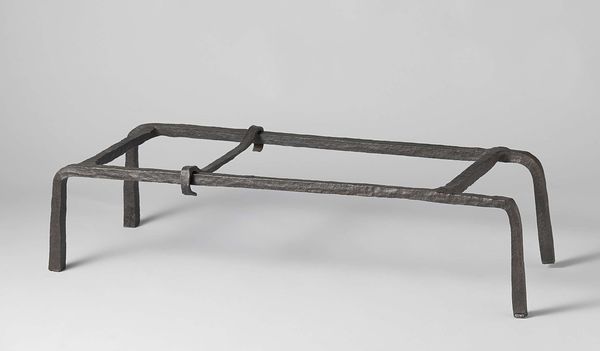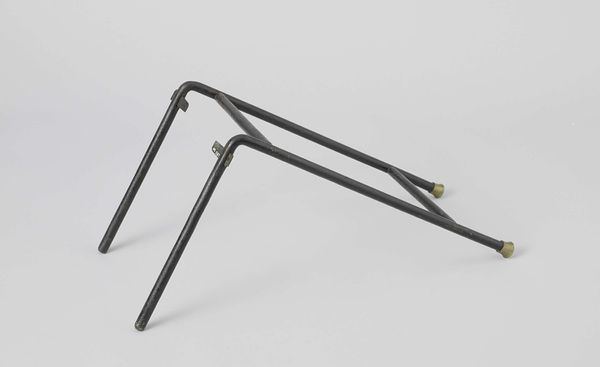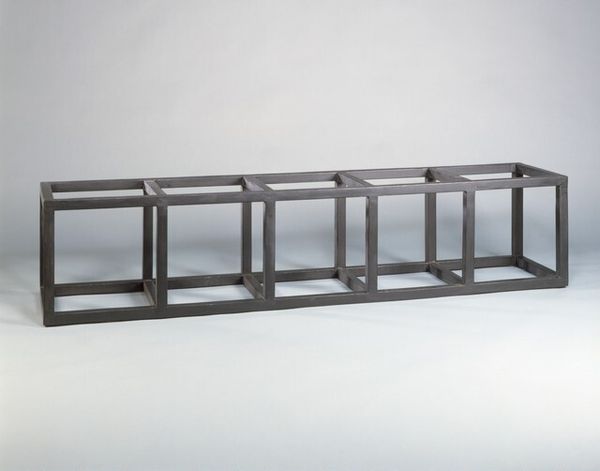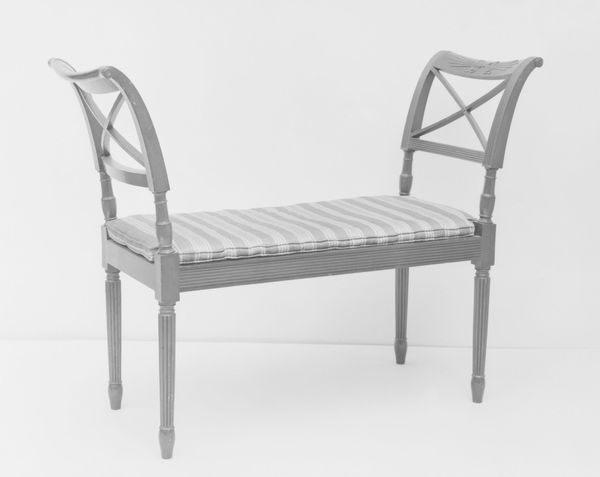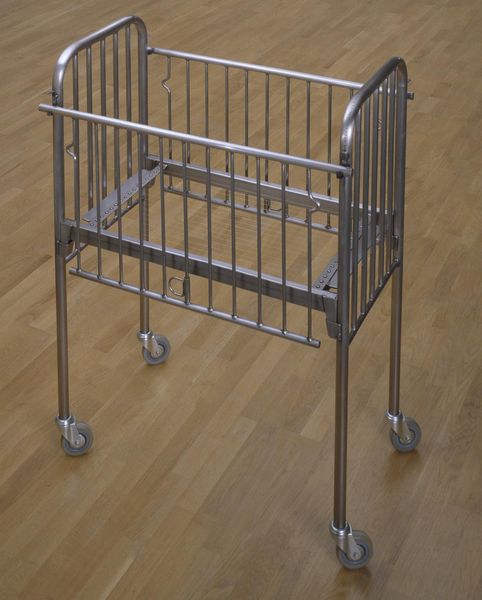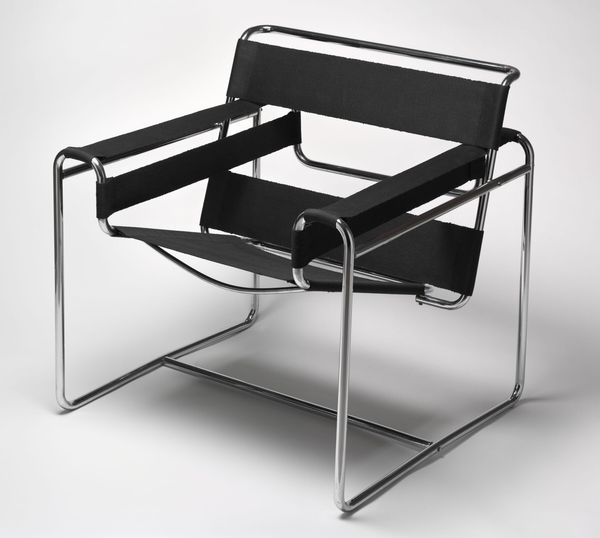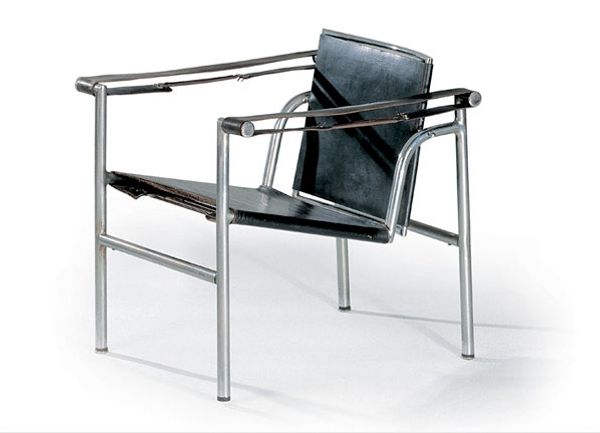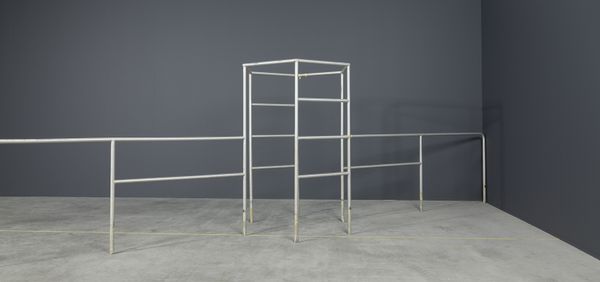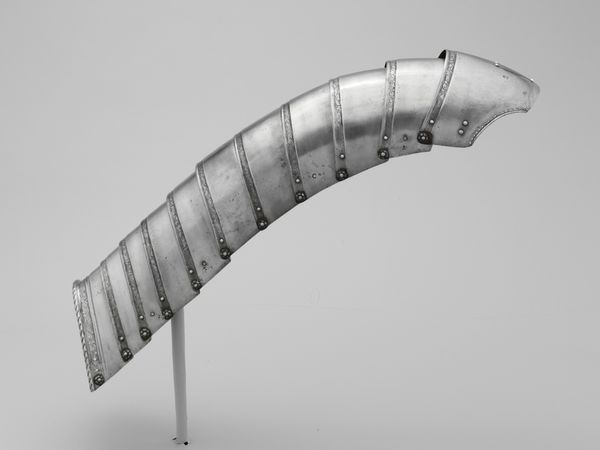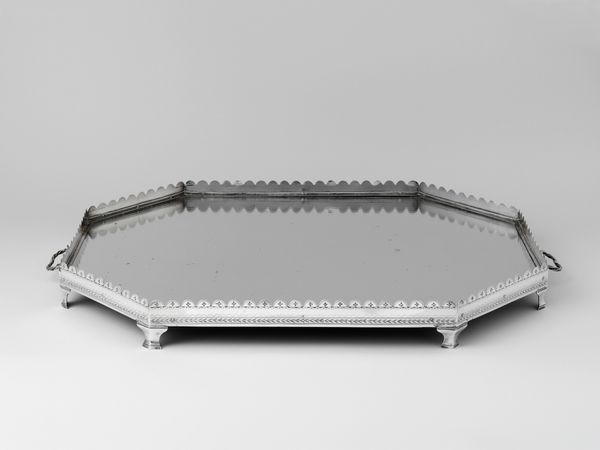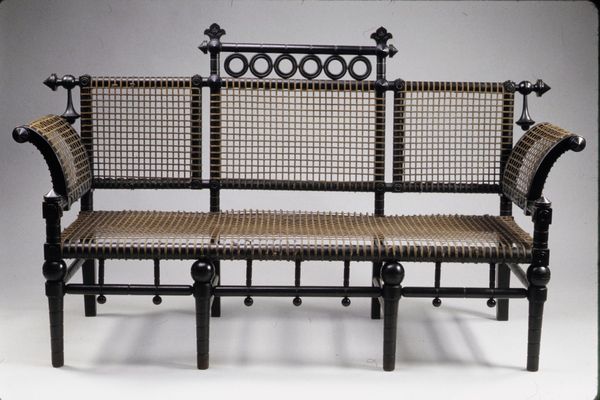
metal, sculpture
#
neoclacissism
#
metal
#
furniture
#
sculpture
Dimensions: height 39.5 cm, width 70 cm, depth 76 cm, height 53.5 cm, width 70 cm, depth 202 cm, height 92 cm, width 70 cm, depth 160 cm, height 92 cm, width 70 cm, depth 100 cm, height 52.5 cm, width 71.0 cm, length 202.0 cm, width 68.0 cm, length 178.0 cm
Copyright: Rijks Museum: Open Domain
This is the campaign bed of Prince William of Orange, created by an anonymous maker. The bed’s most striking feature is its linearity; the entire structure is defined by straight metal poles connected by a grid of mesh. Notice how the cool, steely material and grid-like structure lend the bed a sense of austere functionality, stripping away any ornate trappings of royal life. The bed challenges conventional notions of comfort and luxury. Its rigid form and minimalist design reflect a utilitarian approach, emphasizing portability and practicality over opulence. In this context, the bed redefines our understanding of what it means to be royal and what constitutes comfort. It prompts a contemplation of how social status is symbolized through objects. Ultimately, the bare linearity of the bed serves not just an aesthetic purpose but also to reframe our expectations of royal life. It opens up a space for reinterpreting how power and status are represented.
Comments
rijksmuseum about 2 years ago
⋮
This campaign bed is thought to have belonged to Prince William of Orange, the future King William II. In the early 19th century many high-ranking officers had similar campaign beds, which also served as chairs and recliners. Prince William fought as a general at the Battle of Waterloo (1815), where he was wounded. This made him a hero in the eyes of many.
Join the conversation
Join millions of artists and users on Artera today and experience the ultimate creative platform.
